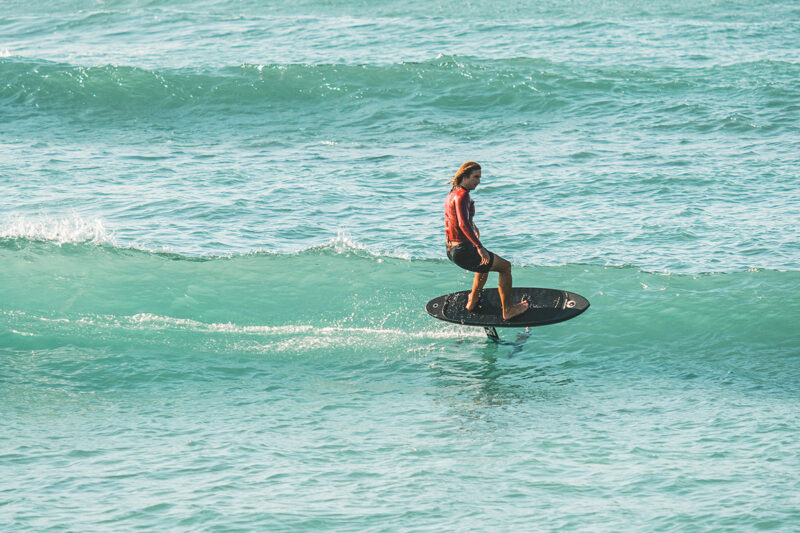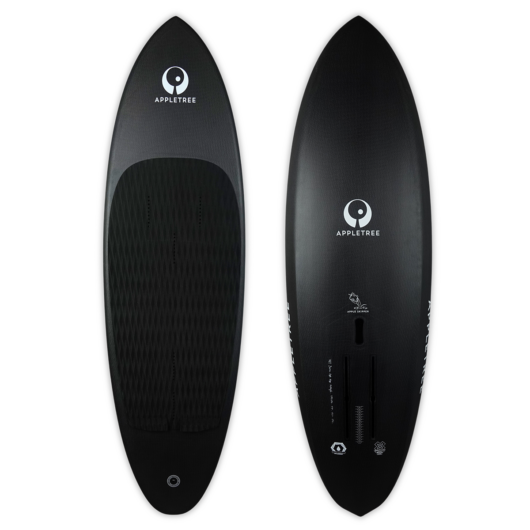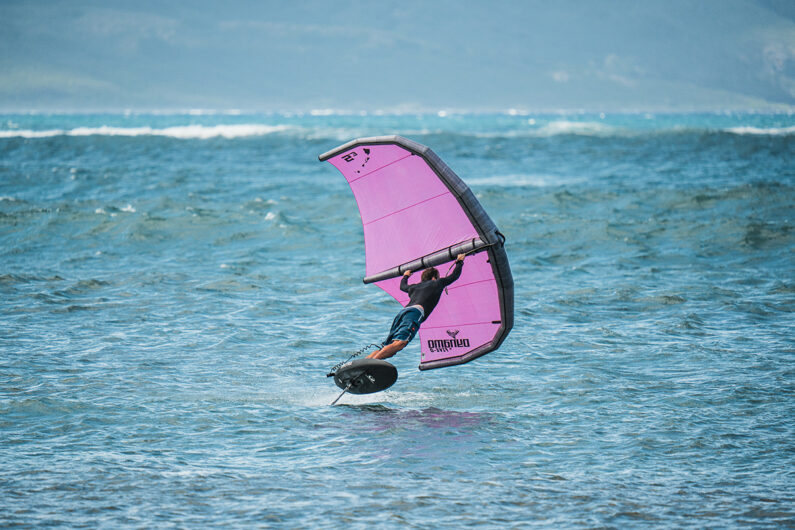Dungeons Masters
“Dungeons” in South Africa is cold, brutal, and not for the faint-hearted — but James Taylor and Jacques Theron take it on with an engineer’s mindset and a taste for calculated risk.
READ MORE

With everything done in-house in their factory in Portugal, Appletree Surfboards are in the enviable position of being able to jump on new foilboard trends as soon as they develop. Thus they were quick to satiate the market’s current enamoration toward midlengths with a specific model of their own – one our test team certainly approved of (just head over to our Deep Dive YouTube series for more on that!).
Hi Wieger. Firstly, what inspired you to add a midlength option to the lineup, and how does it compare with the OG Skipper boards in terms of ride feel and performance?
Technically, we already had a midlength in the lineup – the Skipper DW Prone. It’s a scaled-down version of our downwind board and performs great for prone in small, weak waves. We even made the DW shape down to 75L, so the gap was small – we just never really marketed it that way. Originally, we didn’t feel the need for a wider size range since the Slice V3 is already quite narrow. But after some rider feedback and testing different sizes ourselves, we realized our lineup had become a bit too complicated. It made sense to simplify things under one name, and it gave us the chance to update the shape based on everything we’ve learned over the past year.
How is this board optimized for winging, parawinging, and foil assist?
The Skipper Midlength features a displacement hull – a sleek, canoe-like shape that promotes efficient water flow. It gets moving with minimal effort and quickly builds speed until your foil lifts. This makes it ideal for light winds and low-power disciplines like parawing and foil assist. The streamlined shape reduces water resistance, making takeoffs smoother in both floating and sinker sizes.
So coming back to the Apple Slice V3, which as you say is relatively narrow and close to a midlength, so who should choose which board?
While the Slice V3 shares some features with the Midlength, it’s fundamentally different. The Slice V3 has a planing hull, making it more stable and beginner-friendly – especially in floating sizes. It’s a great choice for intermediate to advanced riders, and the sinker versions are excellent in strong winds and choppy conditions. If you’re an advanced rider looking for a light wind board or something to learn parawing on, the larger Skipper Midlength sizes are a great fit. The smaller sizes suit prone, foil assist, and experienced parawingers. You can definitely wing on them too, but if winging is your main focus – especially on a sinker setup – the Slice V3 might be the better pick.

The updated shape of the Midlength has a longer hard rail and more tail rocker. How do these changes improve performance?
The hard rails improve water release. Earlier models accelerated well but felt a bit sticky at takeoff due to rounded back edges. At foil lift-off speed, you want the board to shed water cleanly, and hard rails do that more effectively. The added tail rocker solves a specific issue: since the foil and standing area are positioned forward, there’s a lot of board behind your back foot. In turns or messy conditions, that tail could catch. The rocker, combined with the pulled-in tail and sharper rails, improves release and responsiveness.
We love the clever touch of all volume sizes ending in 7. Whose idea was that?
We noticed riders talk more about volume than length these days, which used to be the go-to metric. That shift caused some confusion between model names. So, we decided to make all Skipper Midlength volumes end in 7 – a number we don’t use elsewhere. It’s a simple way to keep things clear. If you’re after a 90L board, grab the 87L – it’s close enough that the difference won’t be noticeable. Looking for a 75L? Go with the 77L for the same reason. Easy.
Your vacuum infusion and closed cell foam construction is still unique. How has it evolved recently? Any updates?
We’re proud of the tech we’ve developed in-house, and the fact that we’re still leading the way shows how hard it is to replicate. Being the only larger brand with its own factory gives us full control. We’re always refining our process – small improvements happen constantly, and bigger innovations are always in the works. Having our own facility means we can test and implement upgrades much faster than brands that outsource. It keeps us ahead on both design and tech.

“Dungeons” in South Africa is cold, brutal, and not for the faint-hearted — but James Taylor and Jacques Theron take it on with an engineer’s mindset and a taste for calculated risk.
READ MOREDuotone’s Dakhla shoot gathered an all-star crew - from Tom & Aleks Acherer to Nia Suardiaz and Benjamin May. The media team nailed the visuals, but we’ve added a glimpse behind the scenes with a short trip diary from Benjamin.
READ MOREJack came to our attention around the release of our last issue, where we were tagged in a Reel highlighting his surprise appearance in a Foil Drive ad. A little further digging from us and we realized Jack is quite an inspirational young chap...
READ MORE